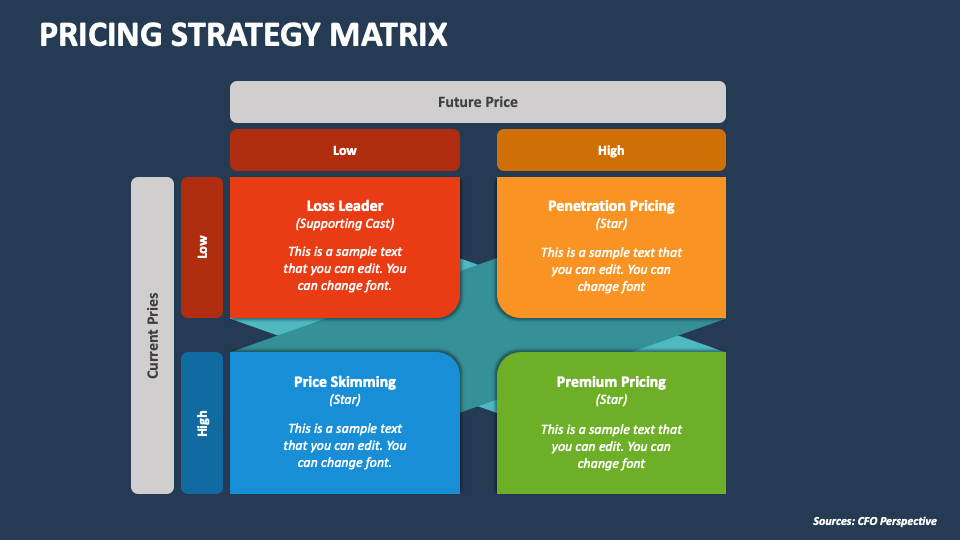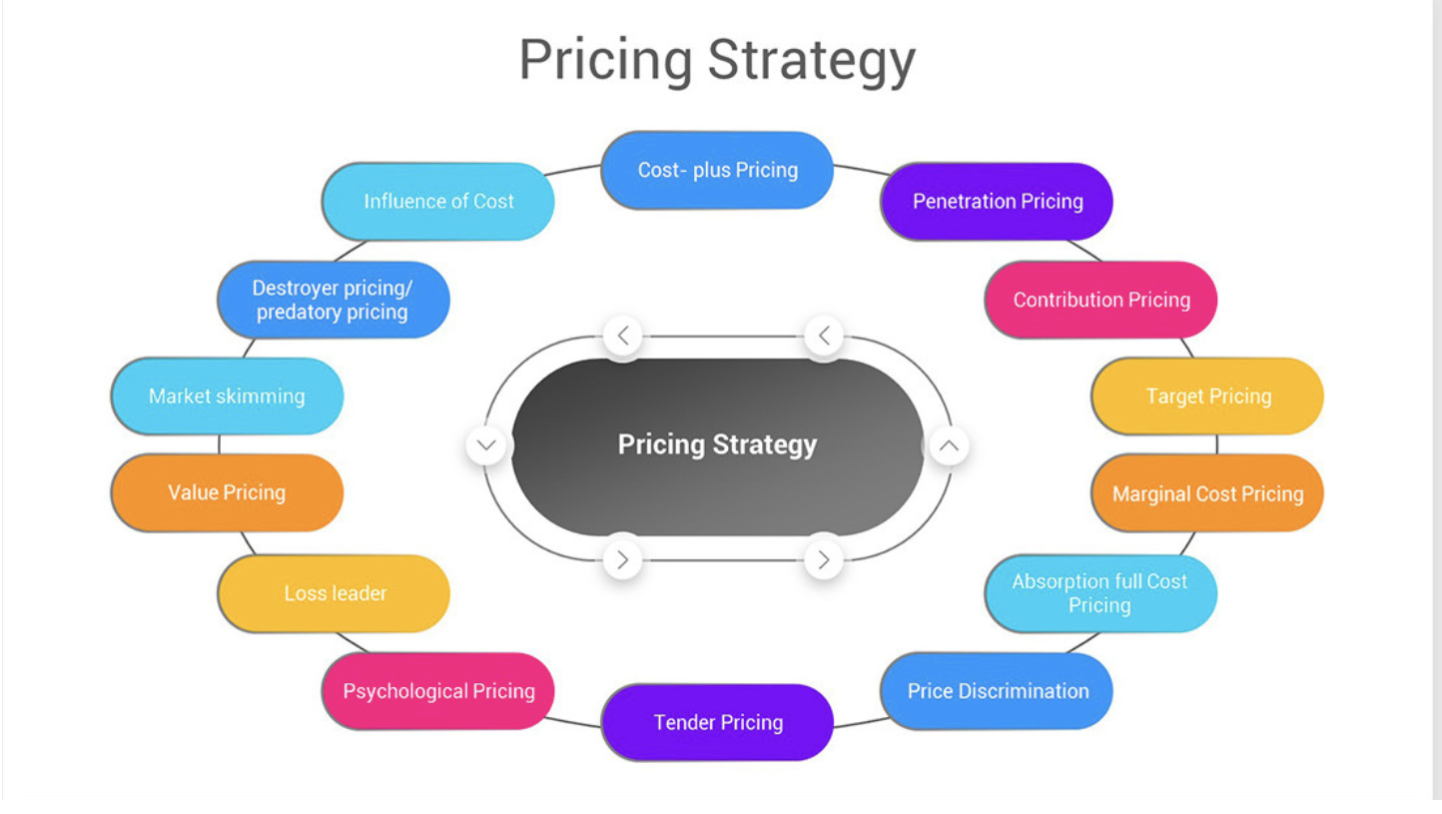Why Flexibility is Important in Establishing Your Pricing Strategy
Why Flexibility is Important in Establishing Your Pricing Strategy
Blog Article

Master Effective Prices Techniques to Maximize Revenue
In the ever-evolving landscape of business, grasping reliable pricing approaches is necessary for businesses aiming to make the most of profit. A nuanced understanding of rates psychology can considerably influence client actions and acquiring choices.
Comprehending Rates Psychology
Understanding rates psychology is vital for companies intending to maximize their prices techniques. This area analyzes how consumers perceive prices and exactly how these perceptions affect their purchasing decisions. Secret principles in pricing psychology consist of the anchoring effect, where the preliminary cost offered functions as a recommendation factor for consumers, and the idea of rate sensitivity, which differs among different client segments.
Furthermore, companies can leverage the notion of viewed worth, where the perceived benefits of a service or product can warrant a higher cost point. As an example, costs rates can create a mood of exclusivity, bring in consumers that link greater rates with premium quality. On the various other hand, psychological prices, such as establishing a rate at $9.99 rather of $10, can dramatically impact customer behavior by making costs appear a lot more appealing.
In addition, deficiency and necessity can enhance the regarded value of products, motivating quicker buying choices. Comprehending these psychological triggers makes it possible for companies to develop prices strategies that not only drive sales yet also foster customer commitment. Therefore, understanding rates psychology is vital for reliable pricing strategy formulation, bring about improved profitability and market positioning.
Implementing Value-Based Prices

Next, sector your clients based on their determination to pay and the worth they perceive. By doing so, you can customize offerings and pricing techniques to line up with different sectors.
Continually keep track of market conditions and consumer responses to refine your prices method over time. By executing value-based rates, companies can boost earnings while cultivating long-lasting customer loyalty.
Discovering Dynamic Pricing Versions
In today's quickly transforming market landscape, vibrant rates models have actually become an effective strategy for businesses looking for to optimize income and react to fluctuations in need. These designs permit firms to readjust their prices in real-time based upon different factors such as client behavior, market fads, and stock levels. By leveraging data analytics and algorithms, organizations can recognize optimal pricing points that maximize sales while staying competitive.
Dynamic rates can take various forms, including time-based prices, where costs rise and fall based upon time of day or season, and demand-based rates, which adjusts prices according to existing customer demand. This flexibility not only enhances profitability however additionally improves consumer satisfaction by supplying prices that reflect real-time market problems.
Applying vibrant pricing requires a durable technological facilities and a deep understanding of client segments. It is vital for services to keep an eye on market signals and customer responses continuously, making certain that pricing strategies line up with broader service objectives. Moreover, clear interaction about prices modifications can help reduce client discontentment and foster trust fund, ultimately directory causing sustained earnings in an affordable marketplace. Accepting dynamic pricing can hence be a transformative technique in the pursuit for optimizing income.
Analyzing Competitor Pricing
Monitoring rival rates is vital for organizations intending to preserve an one-upmanship in their particular markets. By analyzing competitors' prices techniques, firms can determine market patterns, understand customer preferences, and adjust their prices appropriately. This analysis includes event information on competitors' costs, marketing methods, and item offerings to educate pricing choices.
To successfully assess competitor pricing, companies should utilize various devices and methods, such as price monitoring software application, marketing research reports, and client comments. This data can disclose how competitors position their products and solutions, allowing services to separate their offerings or take on similar methods to remain relevant.
Additionally, it is vital to categorize rivals right into straight and indirect competitors. Direct rivals use similar products or solutions, while indirect rivals might fulfill the very same client need with different remedies. Understanding the nuances between these teams will allow services to tailor their prices strategies a lot more efficiently.
Inevitably, continuous competitor prices evaluation is crucial for making educated rates choices. It allows companies to continue to be active in feedback to market changes, ensuring they can seize chances and reduce risks connected with pricing techniques.
Evaluating Prices Efficiency
Recognizing just how rival prices influences market characteristics leads to an all-natural concentrate on reviewing pricing efficiency within one's own organization. This analysis is crucial for recognizing locations of stamina and chances for improvement, ultimately enhancing productivity.
Additionally, performing routine prices audits can reveal inconsistencies between anticipated and real performance. This entails comparing pricing data throughout various segments and networks to comprehend variations and identify trends. Integrating customer feedback can give insights right into regarded value versus real pricing, making certain positioning with market assumptions.
Lastly, leveraging information analytics devices can facilitate much deeper insights into pricing performance, allowing companies to make data-driven changes (Pricing Strategy). By constantly assessing rates performance, companies can adjust to market adjustments and optimize their approaches, ensuring sustained earnings in a competitive landscape
Conclusion
Effective pricing techniques are vital for taking full advantage of earnings in an open market. By leveraging rates psychology, companies can improve perceived value and tailor pricing to varied client sections. The adoption of dynamic and value-based pricing designs promotes real-time modifications based upon need and client determination to pay. Furthermore, continuous evaluation of rival rates and efficiency metrics makes sure critical dexterity. Eventually, a detailed method to pricing not only drives success however also fosters consumer contentment and loyalty.
Understanding pricing psychology is vital for organizations intending to optimize their prices approaches. Understanding these emotional triggers allows companies to create rates techniques that not only drive sales yet additionally foster consumer commitment. Thus, mastering a knockout post rates psychology is important for reliable rates approach solution, leading to enhanced profitability and market positioning.
By examining rivals' prices techniques, companies can recognize market patterns, comprehend customer choices, and readjust their prices appropriately. By leveraging rates psychology, services can boost perceived worth and tailor prices to diverse client sectors.
Report this page